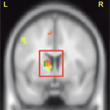Wednesday, 17 October 2012
Learning How To Pique Curiosity

What is learning? What teaching methods are the most effective? Under what conditions do we remember information best? These are big questions, and the subject of continuing debate.
Neuroscientists continue to contribute relevant data to this debate, in particular as regards the conditions that help us learn and retain information best. In 2009, Min Jeong Kang’s research team published a brain imaging study that confirmed the importance of a well known but often under-utilized condition for enhancing learning: curiosity.
In Kang’s study, the participants guessed the answers to a set of trivia questions, were then shown the correct answers, and were tested one to two weeks later to see which answers they remembered best. These answers turned out to be the ones about which they had already known something, but had guessed wrong, so that they had been very curious to learn the right responses.
It was precisely at the moment that the participants guessed incorrectly that their brain images showed the most activity in their caudate nucleus, a structure that plays a central role in the motivation to obtain rewards and the pleasure that comes along with them. This structure was already known to be highly active in people who have a drug dependency and are seeking a dose of their drug, as well as in people who fall in love. Kang’s study showed that this structure also seems to be behind the intellectual pleasure we get from adding a new item to our store of knowledge.
This conclusion is entirely consistent with the ideas presented by Hélène Trocme Fabre, the author of several books in French about learning, including J’apprends donc je suis and Réinventer le métier d’apprendre, both of which have strongly influenced an entire generation of educators. In an interview that she gave in early 2011, she summarized her conception of learning as the act of “welcoming something new into something that is already there”.
At the same time, she pointed out that we are “born to learn”—that all living beings must learn constantly in order to adapt to the world around them. And if some young people don’t seem motivated to learn, maybe the reason is that we are making them deal with grown-up questions too soon, instead of letting them express their own questions—in other words, their curiosity!
![]() The Wick in the Candle of Learning: Epistemic curiosity activates reward circuitry and enhances memory
The Wick in the Candle of Learning: Epistemic curiosity activates reward circuitry and enhances memory
![]() Les rencontres avec Hélène TROCME FABRE (1)
Les rencontres avec Hélène TROCME FABRE (1)
![]() Les rencontres avec Hélène TROCME FABRE (2)
Les rencontres avec Hélène TROCME FABRE (2)
Memory and the Brain | 3 comments »








[…] Until the start of the 21st century, brain-imaging techniques had been used chiefly to confirm the involvement of brain structures that had already been associated with well documented functions such as movement, vision, and language. But subsequently, as these non-invasive methods became more readily available, researchers began to use them to explore other, more complex functions. In this way, researchers have since discovered numerous neuronal circuits specifically associated with higher functions ranging from compassion to love, from meditation to intellectual pleasure. […]
[…] Until the start of the 21st century, brain-imaging techniques had been used chiefly to confirm the involvement of brain structures that had already been associated with well documented functions such as movement, vision, and language. But subsequently, as these non-invasive methods became more readily available, researchers began to use them to explore other, more complex functions. In this way, researchers have since discovered numerous neuronal circuits specifically associated with higher functions ranging from compassion to love, from meditation to intellectual pleasure. […]
[…] Until the start of the 21st century, brain-imaging techniques had been used chiefly to confirm the involvement of brain structures that had already been associated with well documented functions such as movement, vision, and language. But subsequently, as these non-invasive methods became more readily available, researchers began to use them to explore other, more complex functions. In this way, researchers have since discovered numerous neuronal circuits specifically associated with higher functions ranging from compassion to love, from meditation to intellectual pleasure. […]